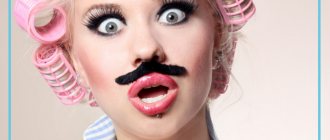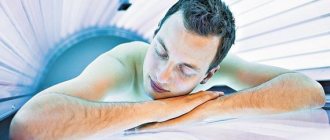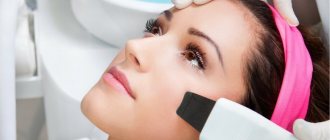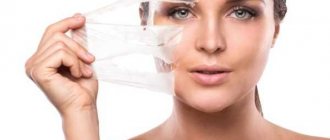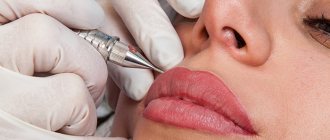Every woman strives to be flawless, like a beauty from the cover of a magazine. After all, any successful popular fashion model has an attractive appearance - tanned velvety skin, perfectly smooth body contour and, naturally, the absence of excess hairs on the skin. In modern conditions, achieving perfection is not so difficult, the main thing is to approach everything wisely and without harm to health. Therefore, today we will consider the most important issues regarding the safest method of depilation - sugaring.
What are the features of the procedure technology and what is required for it?
If you are a beginner and want to do sugar hair removal for the first time, then it is better to trust the professionals - buy sugar paste in a specialized store. This will reduce the risk of burns during the procedure and increase the effectiveness of hair removal using the sugaring method at home. For high-quality depilation, it is necessary to first “prepare the skin”, namely, clean the skin with a tonic, dry it with a napkin and apply talc (has an adsorbing effect, prevents trauma to the epidermis). There are 2 sugar depilation techniques: manual, bandage. Manual technique. Manual technique is performed by hand without the use of improvised means. We form a lump of sugar paste, apply it to the pre-treated skin in the direction against hair growth, distribute the sugar evenly, stroking the skin several times. Then, with a sharp movement, removes it in the direction of hair growth. Bandage technique. The bandage technique involves using strips to remove hair. Apply sugar paste with a spatula or roller applicator according to hair growth. Remove the paste with a depilatory strip with a sharp movement against hair growth.
Removal methods
To understand whether it is possible to sunbathe after hair removal, you need to study the methods of hair removal and what changes in the epidermis they provoke. Some people equate the concepts of “epilation” and “depilation”. This is not entirely correct.
Types of hair removal:
- Depilation. The procedure mechanically removes hairs, namely their upper part. The follicle is not destroyed. Methods of implementation: sugaring, shaving, waxing, plucking with tweezers, special creams.
- Epilation. As a result of exposure to the epidermis, the hair follicle is completely or partially destroyed. The result of the procedure is the death of the hair or its removal from the bulb. Methods of implementation: laser, photoepilation, electrolysis.
How to care for your skin after sugaring?
Proper sugar depilation is only 50% of success, the remaining 50% directly depends on compliance with personal hygiene rules in the first days after the procedure. During the first day you cannot: sunbathe, visit saunas, swimming pools, solariums; use deodorant and various perfumes if sugar hair removal has been performed in these areas; actively engage in sports (in the first days it is advisable to minimize sweating in order to prevent the appearance of acne and irritation); after depilation of the bikini area, you should not wear synthetic tight underwear, rub the skin in this area, or have sex; take a hot bath. What needs to be done on the first day after depilation? Use lotions and gels that prevent ingrown hairs. The most effective are lotions with extracts of mint, lavender, and ylang-ylang; they not only prevent the growth of ingrown hairs, but also soothe the skin. Moisturize depilated skin daily. On day 3-4, do a light mechanical peeling with a scrub or washcloth.
Advantages and disadvantages
Sugar paste consists of components of natural origin. In addition to the main components - water and sugar, in the absence of allergies, you can add citric acid. Salon caramel may contain synthetic components (chocolate or vanilla). They can cause allergies and signs of irritation.
Depilation areas:
- armpits;
- antennal zone;
- legs;
- hands;
- bikini;
- face.
Smooth skin without hair today is not a luxury, but rather a beauty standard
The procedure is used regardless of gender. On large areas of the body, removal is almost painless.
Flaws:
- the price is more expensive compared to waxing;
- coarse hair is difficult to remove;
- painful procedure.
Is it possible to sunbathe after sugaring or visit a solarium?
In the summer, girls usually do sugaring before going to the seaside; naturally, they want to show off their beautiful, smooth legs to everyone and, in addition, enjoy the ultraviolet rays and tan. But the question is different: is it worth sunbathing in the first days after the procedure? The answer is obvious: in the first two days you cannot sunbathe or visit a solarium. Firstly, after sugar hair removal, the sensitivity of the skin increases significantly, so exposure to such strong irritants as the sun can cause irritation, redness, and even thermal burns. Secondly, most likely you will not achieve the desired result in the form of an even bronze tan. Ultraviolet rays in the first 2 days after sugaring increase the risk of pigment spots, pronounced black dots at the site of torn hair. Before each exit into the scorching summer sun, it is necessary to carefully treat exposed areas of the body that have been depilated in the last 2 days with skin care products with a high degree of protection from ultraviolet rays. Unfortunately, the prohibitions of the first two days apply not only to sunbathing and solariums, but also to swimming pools, baths, saunas, and various bodies of water. Procedures in saunas and baths are caused by exposure to high temperatures; under normal conditions, this temperature regime has a positive effect on the skin, BUT, as already mentioned, sensitive skin after sugaring is subject to severe irritation and thermal burns. In the first 24 hours after sugar depilation, due to, albeit minor, trauma to the epithelium and hair follicles, in order to avoid infection of the skin, you should avoid going to the pool and natural bodies of water.
What medications should not be taken before laser hair removal?
- Antibiotics (tetracyclines, doxycycline, etc.). They are eliminated from the body within 2 weeks, after which the procedure can be carried out.
- Drugs that have a photosensitizing effect (i.e. increase the sensitivity of the skin to exposure to sunlight or light). May cause chloasma.
- Non-steroidal anti-inflammatory drugs (ibuprofen, ketofen, naproxen, celecoxib). Dispatched within 1-2 days. Be sure to look at the annotation for the complete withdrawal period. ⠀
- Diuretics (furosemide, bumetanide, hydrochlorothiazide). Available from 8 to 24 hours.
- Retinoids in the treatment of acne. They are removed in 6-8 months (laser hair removal cannot be done until complete removal).
- Antihyperglycemic agents may cause an allergic reaction.
- Drugs used to treat tumors can cause a photoallergic reaction.
- Neuroleptics. They are released within 2-3 days.
Before the laser hair removal procedure, you should stop taking medications that have photosensitizing properties. Please check with your cosmetologist in advance which medications should not be taken before the laser hair removal procedure.
Be sure to tell your specialist if you are taking any medications. Some drugs may cause side effects. The Vidal reference book will help you find all the necessary information about medications.
What are the contraindications and side effects for sugaring?
Sugaring is a fairly gentle procedure, but nevertheless there are categories of people for whom it is prohibited. Contraindications: chronic skin diseases (psoriasis, eczema, atopic dermatitis); severe varicose veins; thrombophlebitis; warts, moles, papillomas, skin cancer; rosacea; epilepsy (pain during sugaring can provoke an epileptoid attack); severe pregnancy (sugaring of the bikini area); diabetes; sun, chemical burns, skin wounds; the first 24 hours after sunbathing on the beach, after a solarium; the first year after laser skin resurfacing; after chemical peeling; while using adapalene, accutane (sugar depilation can be performed a year after the end of the course of treatment). Adverse reactions: Allergic rash to natural components of sugar paste. Pimply rash. Most often it occurs at the site of ingrown hairs if hygiene rules are not followed after depilation. Bruises are a sign of inept manipulation. Usually they go away within 2-3 days. If the bruises are diffuse and there are a lot of them, you should go to the doctor to rule out blood diseases. Redness is a normal reaction to sugaring and goes away after a few hours.
Tanning before waxing
It is not recommended to take sun-air baths some time before the start of the procedures. When exposed to sunlight, the skin loosens. Its soft texture becomes too delicate for aggressive depilation with hair pulling. When a cosmetologist intervenes, microcracks, wounds, and areas of inflammation may occur.
Direct exposure to rays leads to the following negative consequences:
- the occurrence of burns that are unacceptable during depilation (the area of cleansing should not be completely or partially burned or damaged);
- pigmentation in case of too long action;
- when constantly combined with sugar depilation, it leads to a significant deterioration in the condition of the skin, drying out, and the appearance of pits on the skin.
What not to do after sugaring
After the procedure, the skin should not be exposed to an aggressive environment. What you should not do after sugaring for the first 12 hours is prohibited: wet the treated area with water (if possible); use cosmetics (tonics, lotions, deodorants); visit a sauna, bathhouse; go to the swimming pool; sunbathe in the sun, do not visit the solarium; take a hot bath; do fitness; do sugaring too often; pluck hairs with tweezers. Particular attention is paid to the bikini area. The skin is constantly covered with clothing and does not breathe, so there is a greater chance of irritation and bacterial growth. On the first day, you should avoid rubbing the skin and use underwear only made from natural fabrics. When going to the solarium, cover all areas to be epilated.
Do I need to shave before laser hair removal?
Before the laser hair removal procedure with a diode laser, the hair length should be no more than 1 mm. The length of the hair is removed using a trimmer, razor, or scissors.
Why is this being done?
Firstly, long hair uses laser energy, which should be spent on destroying the follicle.
Secondly, singed hair can get on the skin and burn. Burnt hair also smells bad.
For laser hair removal, the hair length should be no more than 1 mm. Use a razor or trimmer.
Skin peels after sugaring
If such a reaction occurs, then measures must be taken immediately to eliminate it. If the procedure is carried out according to all the rules, preliminary and subsequent processing is done, then peeling does not occur. Why peeling occurs: failure to comply with hygiene rules; penetration of infection into the skin; refusal of moisturizing procedures; tanning in the sun, going to the solarium. To restore skin that has begun to peel, professionals give the following advice: treat damaged areas with Chlorhexidine or Miramistin (suitable for all areas); use antiseptic ointments: Boro Plus, Rescuer, Malavit; if the cause of peeling is open sun, then crepe Panthenol and La Cree will help; dairy cream, kefir or sour cream will help restore moisture and restore pH; one of the popular inexpensive brands for professional care Gloria. You can take care of your skin using decoctions of chamomile herbs and oak bark. Essential oils after sugaring (eucalyptus, sea buckthorn, tea tree) moisturize and relieve irritation. Aloe and Kalanchoe juice has a healing effect.




